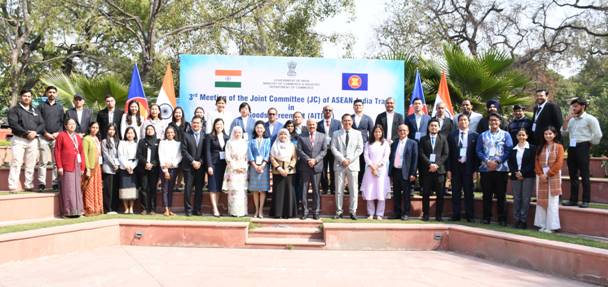The 3rd meeting of the ASEAN-India Trade in Goods Agreement (AITIGA) Joint Committee took place in New Delhi from 16-19 February 2024, co-chaired by representatives from India and Malaysia. Delegates from ASEAN countries participated in the meeting.
Background of AITIGA
The AITIGA was signed in 2009. In September 2022, both sides initiated a review process to enhance the Agreement’s trade facilitation and mutual benefits. Eight Sub-committees were formed to negotiate various policy areas.
Progress and Discussions
During the 3rd meeting, the Joint Committee reviewed negotiation progress. Sub-committees presented updates on market access, Rules of Origin, Standards, technical regulations, and conformity assessment procedures. Focus areas for further discussions were outlined, and the work program for the review was updated.
Trade Growth and Objectives
India-ASEAN trade reached USD 131.58 Bn in 2022-23. The AITIGA review aims to foster balanced and sustainable trade expansion. Both sides target concluding the review by 2025.
Future Meetings
The 4th meeting of the AITIGA Joint Committee is scheduled for May 2024 in Kuala Lumpur, Malaysia.
Multiple Choice Questions (MCQs):
- When was the AITIGA signed?
- A) 2009
- B) 2010
- C) 2012
- D) 2015
- Answer: A) 2009
- How many Sub-committees were formed under the AITIGA Joint Committee?
- A) Five
- B) Six
- C) Seven
- D) Eight
- Answer: D) Eight
- Where was the 3rd meeting of the AITIGA Joint Committee hosted?
- A) Bangkok, Thailand
- B) Jakarta, Indonesia
- C) New Delhi, India
- D) Manila, Philippines
- Answer: C) New Delhi, India
- What is the objective of the AITIGA review?
- A) To restrict trade between India and ASEAN
- B) To enhance trade facilitation and mutual benefits
- C) To reduce market access for both sides
- D) To limit sustainable trade expansion
- Answer: B) To enhance trade facilitation and mutual benefits
